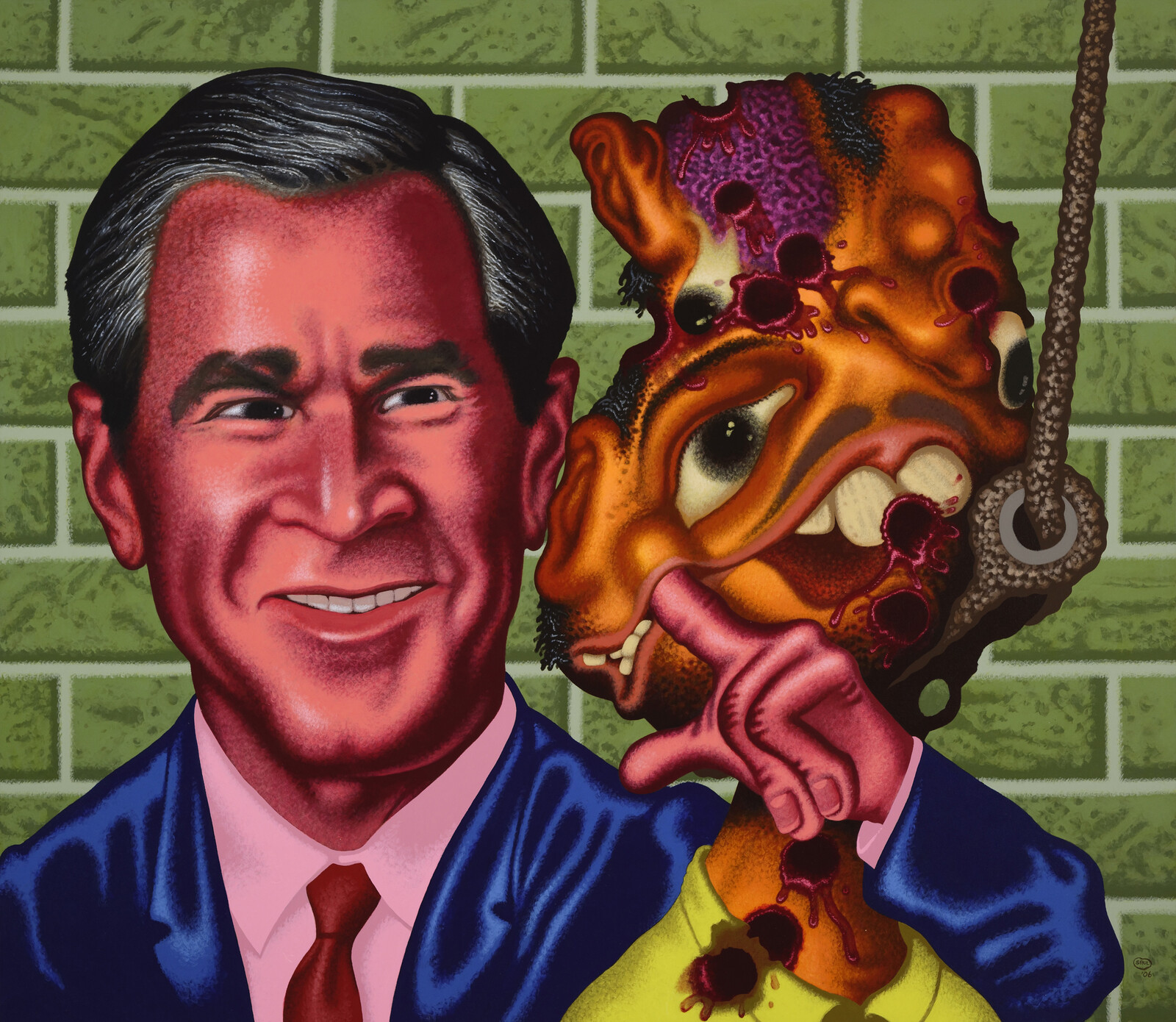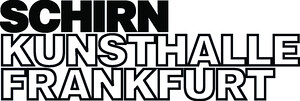June 2–September 3, 2017
Römerberg
60311 Frankfurt am Main
Germany
T +49 69 2998820
welcome@schirn.de
www.schirn-mag.com
Facebook / Twitter / YouTube / Instagram / Pinterest / #PeterSaul / #Schirn
From June 2 to September 3, 2017 the Schirn Kunsthalle Frankfurt is presenting an extensive survey exhibition of the work of the American painter Peter Saul (*1934 in San Francisco, California). Long before “Bad Painting” became a central concern in contemporary art, Peter Saul deliberately offended good taste. Beginning in the late 1950s he developed his highly individual idiom blending Pop Art, Surrealism, Abstract Expressionism, Chicago Imagism, San Francisco Funk, and cartoon culture, one in which he managed to address complex political and social issues. When depicting the darker sides of the American Dream he produces an almost irate kind of painting. In it he combines exuberant humor and playful but harsh criticism of the system. He makes use of jokes, slapstick, puns, comedy, and persiflage, and often crude humor in his caricature-like attacks on American high culture.
The Schirn has brought together roughly 60 works by this hitherto little noticed “artists’ artist,” among them groundbreaking groups of works like his Ice Box Paintings, his comics narrations and Vietnam paintings from the 1950s and 1960s, as well as never exhibited drawings and selected late works from the 1980s to the 2000s.
“Peter Saul has time and again pugnaciously pilloried American realities. One might refer to his painting style as ‘propaganda for the good.’ His pictorial narratives challenge us: garish, bright colors, wild forms coupled with stylistic originality, and always with a tendency toward exaggeration. Peter Saul demands our full attention,” says Dr. Philipp Demandt, Director of Schirn Kunsthalle Frankfurt, of the artist’s painting.
The exhibition, curated by Dr. Martina Weinhart, begins with Peter Saul’s early Ice Box Paintings from the late 1950s and early 1960s. They present a chaotic excess of consumer goods, and tell of the promises of prosperity and economic growth. At the same time they are settings for narratives of mass and consumer culture: in a weird formal language Saul packs whole lives into these Ice Boxes. In his work Saul combines contrasting stylistic directions like Pop Art and Abstract Expressionism, and as a unique feature adds to his motifs the telling of stories. As the characters in his narrations the painter frequently chose popular comic-strip heroes like Mickey Mouse, Superman, or Donald Duck. They were figures everyone knew, and with whom the public identified. In his works from the 1960s he used his comic characters in dealing with serious political issues, like in Mickey Mouse vs. The Japs (1962), Superman and Superdog in Jail (1963), or Superman’s Punishment (1963). In a whole series of other paintings Saul shifts to the main focus of his narratives and illustrates crimes and violence. He pictures a Killer (1964), a Woman Being Murdered (1964), or a group of bank robbers, the Super Crime Team (1961–62).
In the mid-1960s Saul increasingly included political messages in his works. His proximity to Funk Art, especially Junk Culture, a specific genre prominent on the West Coast and especially in San Francisco, is obvious. Saul was one of the first painters to turn to one of the darkest chapters in American history with his Vietnam paintings. In Yankee Garbage (1966), Vietnam (1966), and the main work from this group, Saigon (1967) Saul takes a stand and expresses his rage at such atrocities as the torture and sexual violence perpetrated by the American military in Vietnam. Here too the artist employed the language of comic books: all the figures are caught up in a chaotic jumble, garishly colorful, and overdrawn. In these works one sees both a very dark, sarcastic humor and biting criticism of the political system. In addition to that Saul deals in his works with racial conflicts and social discrepancies between poverty and wealth. The Schirn presents some of his most meaningful paintings, like The Government of California (1969) or San Quentin #1 (Angela Davis in San Quentin) (1971). To this day Peter Saul’s painting deals with contemporary American issues, as in his Bush at Abu Ghraib from 2006.
The exhibition is made possible through support from the Terra Foundation for American Art.
An exhibition produced by the Schirn Kunsthalle Frankfurt in cooperation with the Deichtorhallen Hamburg / Sammlung Falckenberg.
Director: Dr. Philipp Demandt
Curator: Dr. Martina Weinhart
Press contact: Pamela Rohde (Head of Press/Public Relations)
presse [at] schirn.de / T (+49 69) 29 98 82 148
Press material: www.schirn.de/en/ (texts, images, and films for download under PRESS)



